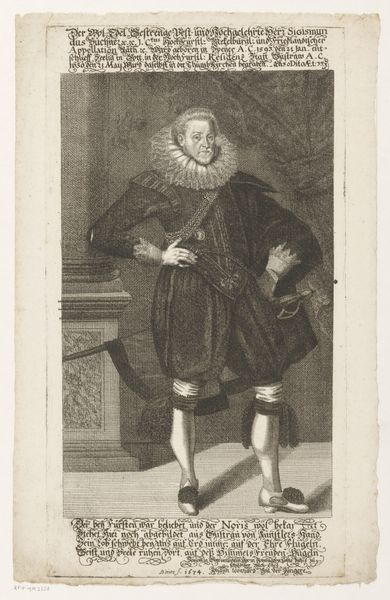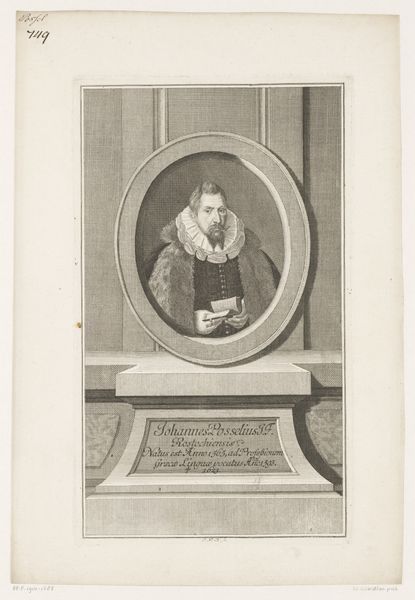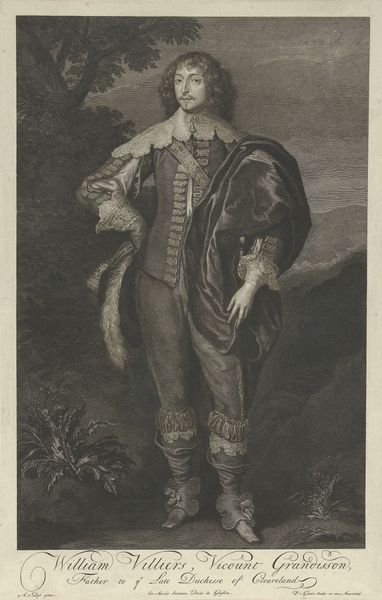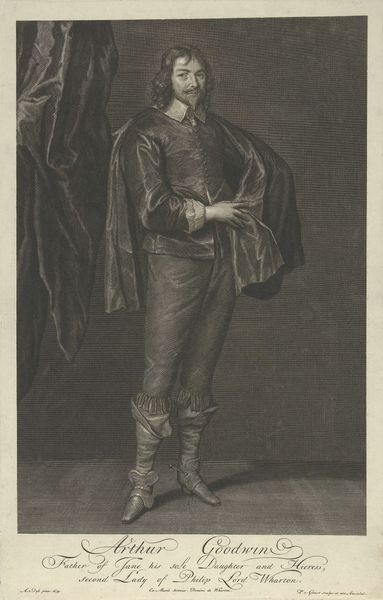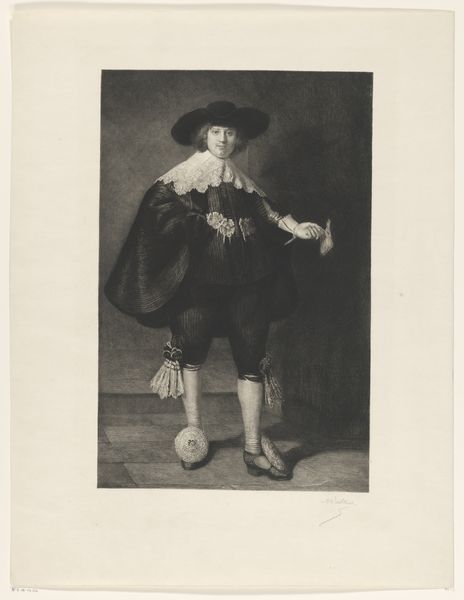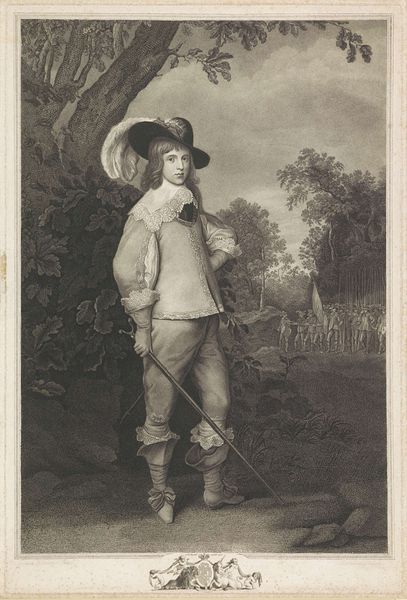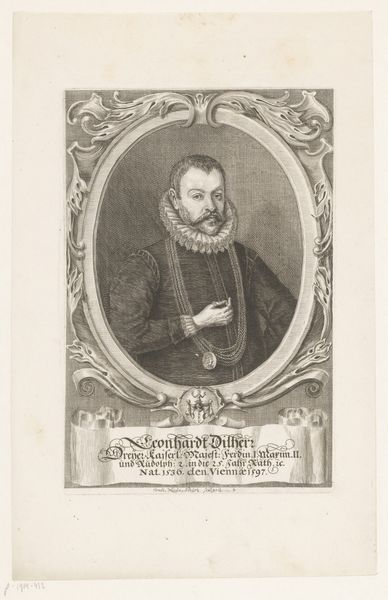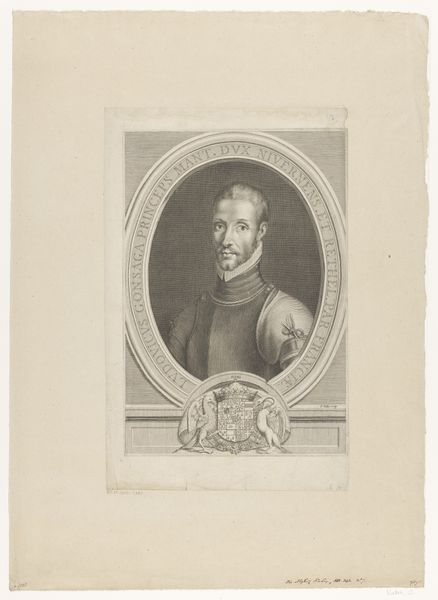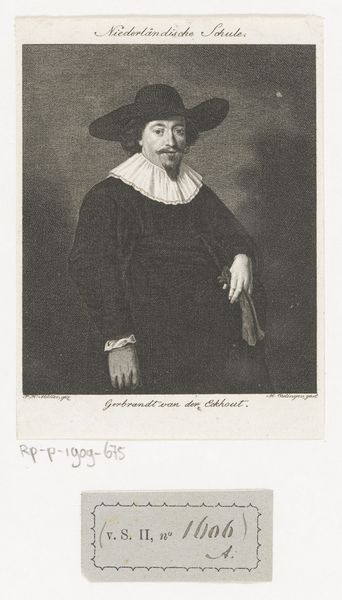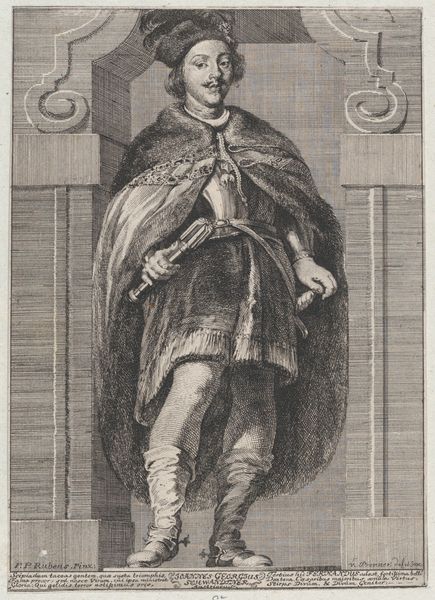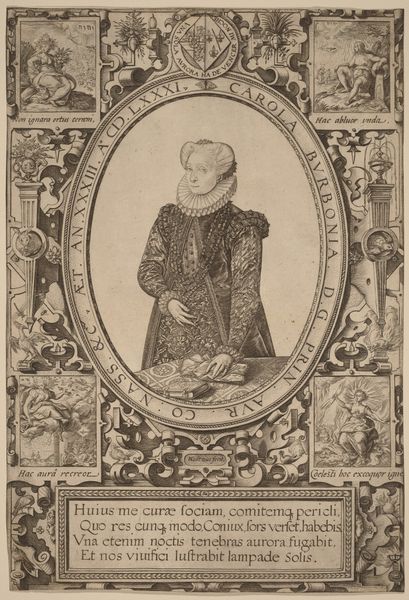
Willem Kettingh (d 1670). Chief Treasurer and Bailiff of the Prince of Orange c. 1640 - 1755
0:00
0:00
painting, oil-paint
#
portrait
#
baroque
#
dutch-golden-age
#
painting
#
oil-paint
#
landscape
#
portrait art
Dimensions: height 208 cm, width 121 cm, depth 7 cm, weight 19 kg
Copyright: Rijks Museum: Open Domain
Mattheus Verheyden painted this oil on canvas of Willem Kettingh, Chief Treasurer and Bailiff of the Prince of Orange, sometime in the first three-quarters of the 18th century. Kettingh held a powerful position in the Dutch Republic, overseeing the financial affairs of the House of Orange, which had a central role in Dutch politics. Portraits like this functioned as a form of propaganda, reinforcing the power and legitimacy of the ruling elite. The classical column and landscape allude to Kettingh's status and refinement, while the coat-of-arms further legitimizes his power. The document in his hand speaks to the administration of the Dutch state. Notice how Verheyden has paid great attention to the textures and patterns in Kettingh’s clothes, which speak to the social and economic structures of the time. To fully understand the painting, we need to consult archival sources, such as letters, diaries, and financial records, which reveal much about Dutch society in the 1700s. The meaning of art is always contingent on its social and institutional context.
Comments
No comments
Be the first to comment and join the conversation on the ultimate creative platform.
